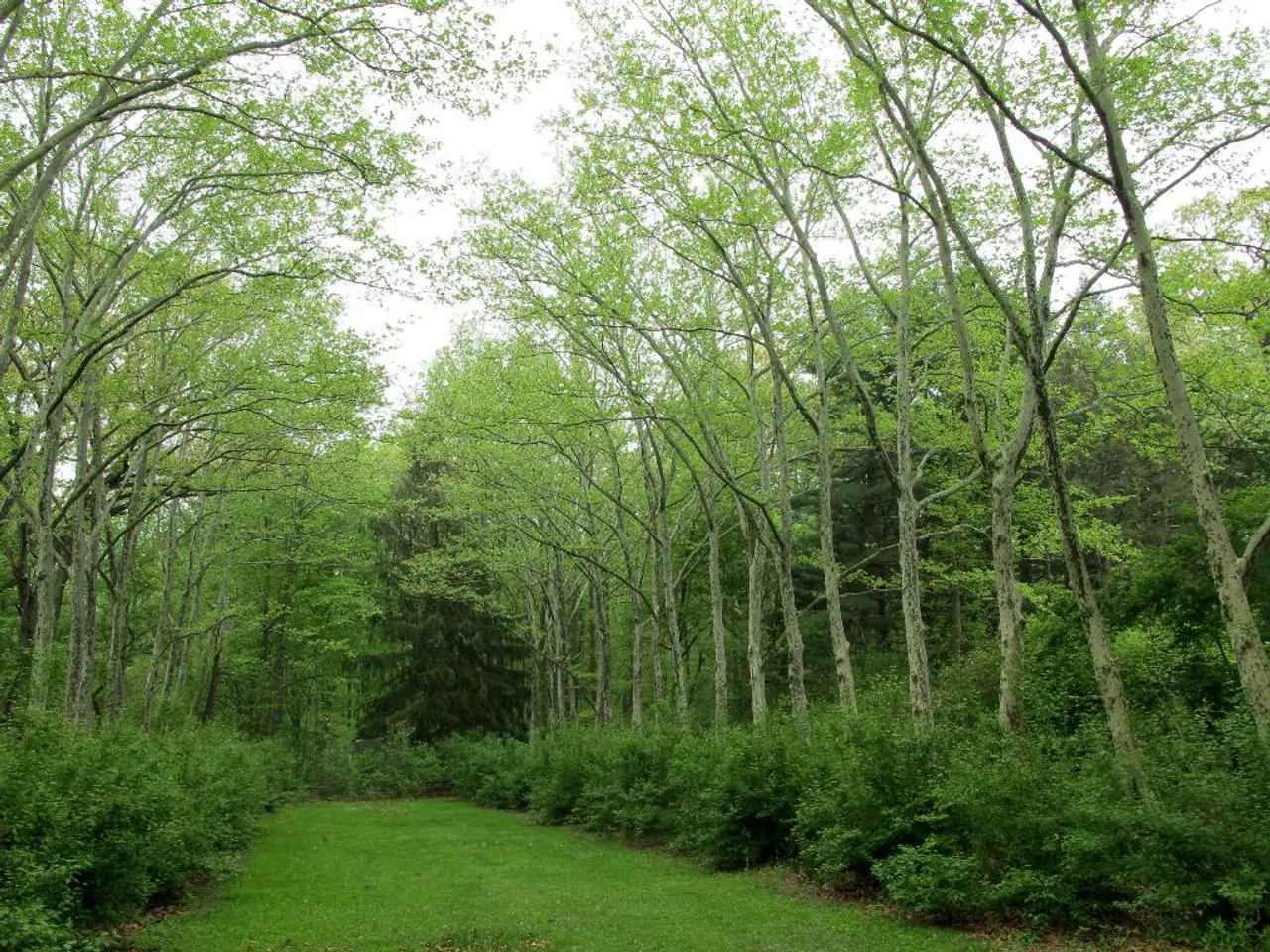The Future of Clean Energy Isn't Simply About the Method-It's Equally Important to Consider the Location
In a world striving to combat climate change and protect biodiversity, the strategic deployment of renewable energy on converted lands presents a promising solution. With over 6 million square kilometers of such lands globally suitable for renewable energy development, the potential for clean energy generation is vast [1-4].
These converted lands, encompassing settled areas, agriculture lands, mine sites, roads, and other transformed lands, offer a footprint sufficient to meet clean energy demand 17 times the nationally determined contributions (NDC) as committed by countries for the Paris Climate Agreement [5]. This strategic use of converted lands could have a significant impact on global emissions goals and help avoid threats to over 150 endangered species in countries like Indonesia, Malaysia, and Thailand [6].
Sage grouse in North American grasslands and snow leopards of Central Asia are examples of species that could be affected by unplanned clean energy deployment. By contrast, a deliberate strategy to site energy on converted lands can relieve pressure on remaining natural lands [6].
One innovative approach to this dual-use strategy is the implementation of agrivoltaic systems, which integrate solar panels with farmland. These systems demonstrate that solar installations need not displace agriculture or natural ecosystems; instead, they can enhance them. Solar farms planted with native flowers support pollinator biodiversity and wildlife habitat, improve soil health, and reduce erosion [1-3].
Moreover, wind turbines installed on agricultural lands maintain continued farming activities around their bases, providing landowners with income while minimizing land-use conflict and conserving habitats. Rural community benefits also emerge through economic development, tax revenues funding local services, and supporting rural manufacturing tied to renewable energy infrastructure [2-4].
By converting already-degraded or underutilized agricultural lands to renewable energy sites rather than pristine natural areas, such projects avoid direct land competition and negative impacts on threatened species, preserving critical habitats. This approach aligns renewable energy expansion with farmland conservation and biodiversity goals, facilitating carbon emission reductions without further fragmenting ecosystems [3].
In summary, the integration of renewable energy production with agriculture and native landscaping under solar arrays supports biodiversity, contributes to climate resilience, and promotes economic incentives for rural communities and landowners [1-4]. This strategic approach to clean energy development on converted lands offers a sustainable, responsible pathway towards meeting global emissions goals while preserving natural lands and biodiversity.
References:
[1] Agrivoltaics: A promising approach for sustainable energy and agriculture. (2021). Science.
[2] Benefits of wind energy for rural communities. (2020). Renewable Energy.
[3] Strategic land use for renewable energy and biodiversity conservation. (2019). Nature Sustainability.
[4] Economic impacts of renewable energy infrastructure on rural manufacturing. (2018). Energy Policy.
[5] Potential clean energy footprint from converted lands exceeds Paris Agreement commitments. (2020). Nature Communications.
[6] Unplanned clean energy deployment threatens global biodiversity. (2021). Science Advances.
- By adopting a deliberate strategy that deploys renewable energy on converted lands, scientists can potentially alleviate threats to over 150 endangered species, as seen in countries like Indonesia, Malaysia, and Thailand, providing a more sustainable approach than unplanned clean energy development.
- The integration of renewable energy production with agriculture and native landscaping under solar arrays not only supports biodiversity and contributes to climate resilience but also promotes economic incentives for rural communities and landowners, making it an appealing solution for the financing of future clean energy projects.
- In contrast to pristine natural areas, strategic renewable energy projects on already-degraded or underutilized agricultural lands not only avoid direct land competition and negative impacts on threatened species, thereby preserving critical habitats, but also align with farmland conservation and biodiversity goals, ensuring a harmonious coexistence between clean energy expansion and ecosystems.




